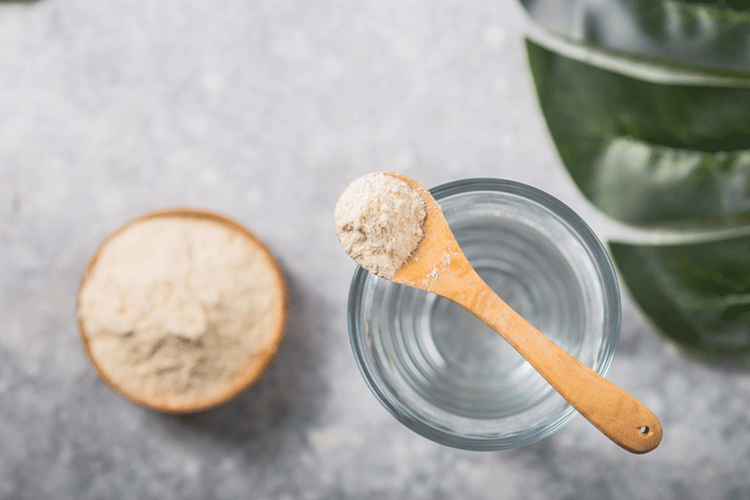Citri-Fi citrus fiber provides high functionality including high water holding and emulsification properties. Without properly hydrating the citrus fiber, food products are compromised. Fiberstar recommends four different ways to hydrate Citri-Fi citrus. As a result, the hydration activates the functionalities which deliver the full benefit within food products.
Fiberstar’s Citri-Fi® citrus fiber provides natural functional benefits which improve food product stability and quality. However, hydrating citrus fiber is key. Due to the natural fiber’s composition of both insoluble and soluble fiber, which contains natural intact pectin, Citri-Fi provides high water holding and emulsification properties. As a result, product developers create products with cleaner food labels without compromising quality. Fiberstar’s technical service team highlighted the below critical success factors when hydrating citrus fiber.
1) Why is hydrating Citri-Fi citrus fiber important when used in food products?
Citri-Fi citrus fiber is created from byproduct of the citrus juicing industry. The patented mechanical process opens up the fiber to create high surface area. As a result, this surface area provides multiple functional benefits including high water holding and emulsification. In the end, these functional benefits improve food products like meats, bakery, dairy and sauces.
Properly hydrating this citrus fiber fully activates the functional benefits especially since this citrus fiber's usage level ranges between 0.2% and 1.0% for most applications. In other words, Citri-Fi holds high levels of water and/or oil at low usage levels. Without proper hydration, the citrus fiber will not perform to its full potential.
2) How to hydrate Citri-Fi citrus fiber?
Fiberstar recommends four different hydrating methods. Three of the methods hydrate the citrus fiber using only water. However, the other method incorporates oil and water to create stable emulsions. Video demonstrations available below and on the website visualize the step-by-step process.
- Dry ingredients method: Mixing Citri-Fi with other dry ingredients like sugar or salt helps disperse the citrus fiber when added to water. This method minimizes fish eyes or clumping and improves uniformed dispersion.
- Mixer method: Adding Citri-Fi to the water vortex disperses the citrus fiber uniformly.
- Blender method: Adding Citri-Fi to the water vortex disperses the citrus fiber uniformly.
- 5% emulsion method: Combining Citri-Fi and oil first and mixed for a minute opens up the fiber’s surface area so that the fiber traps the oil. Then, add water to the emulsion and continue mixing. During the mixing, the fiber holds more water and oil creating a stable emulsion. A thickened emulsion indicates that the Citri-Fi hydrated.
3) What is the most preferred way to hydrate citrus fiber and why?
Most of the time, Fiberstar recommends adding Citri-Fi citrus fiber to dry ingredients first before hydrating. This method is easy to implement at the plant level. Also, this method improves dispersion and prevents fish eyes or clumping to occur during food processing.
4) What common issues occur when the citrus fiber fails to hydrate fully?
- Clumping: If the citrus fiber fails to hydrate enough, it may form clumps when it comes in contact with water during food processing.
- Poor texture and mouthfeel: If the large size Citri-Fi product, ( i.e. TX10), remains partially hydrated, the material lacks softness. It creates a poor texture and mouthfeel like chewing a hard lump. The water binding functions fail to activate.
- Limited functional benefits: Insufficient hydration weakens the functional benefits including water binding, viscosity, emulsification, etc. which causes developers to overuse or exceed the recommended usage level.
- Flavor interference: If the citrus fiber fails to hydrate fully, the food ingredient causes uneven dispersion of the fiber in the final food application. The accumulated citrus fiber interferes with the flavor.
5) Which food products are the most sensitive and require the Citri-Fi to be fully hydrated and why?
The food formulas that are most sensitive are those that contain very little water and/or very high solids content. In other words, food systems that have little available water to hydrate the Citri-Fi citrus fiber. To avoid a situation where the Citri-Fi is not able to hydrate, it is recommended to add both Citri-Fi and water into the formula early on so that there is sufficient mixing and time for hydration. Without proper hydration, the Citri-Fi will not be able to fully function.
Some examples include fruit fillings, icings, cream filling, sauces, spreads, and bakery items that have minimal water addition. Another mixing technique that will assist with hydration in these sensitive applications is the use of shear, which will both accelerate hydration and help develop Citri-Fi’s functional properties.
Additional Information



